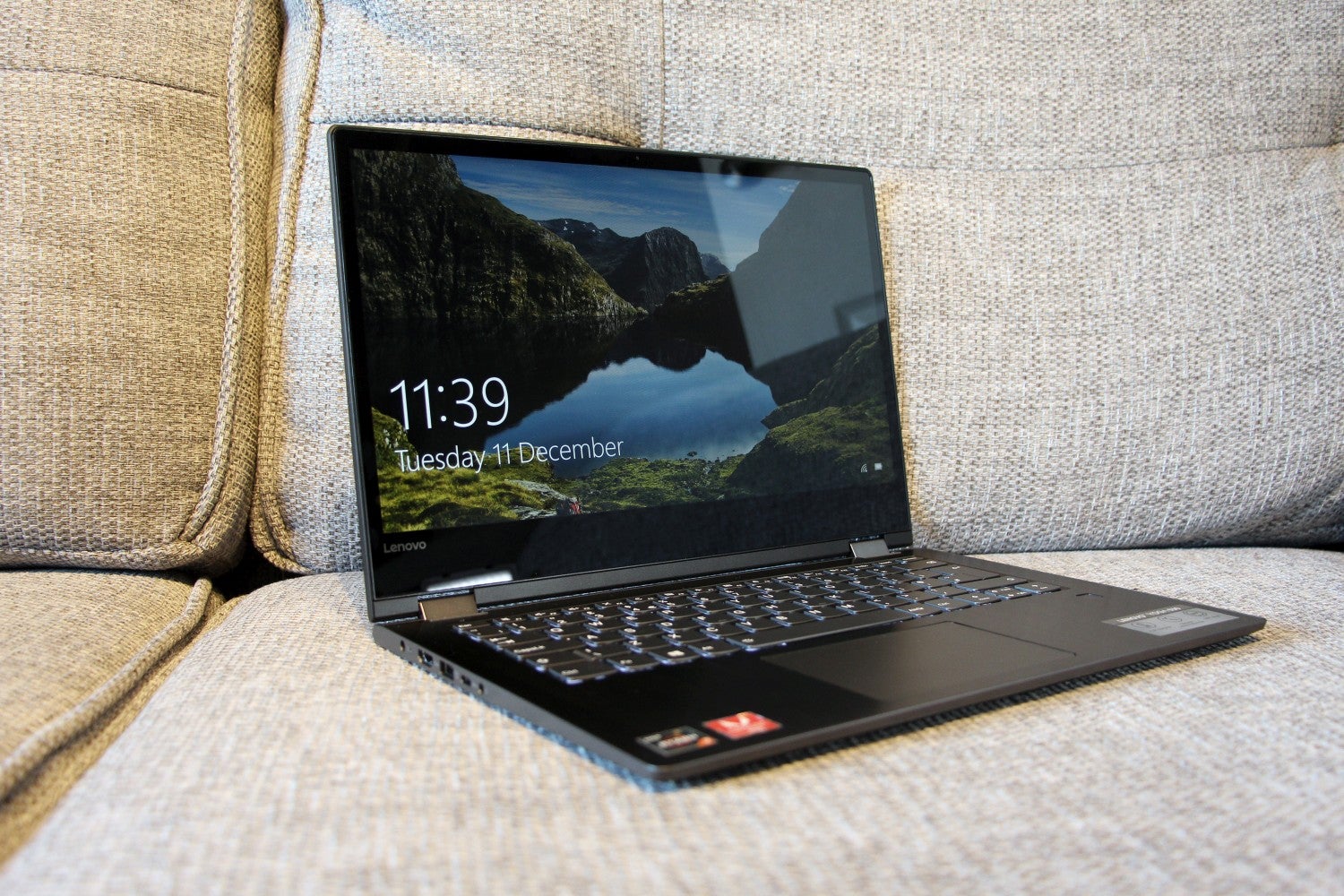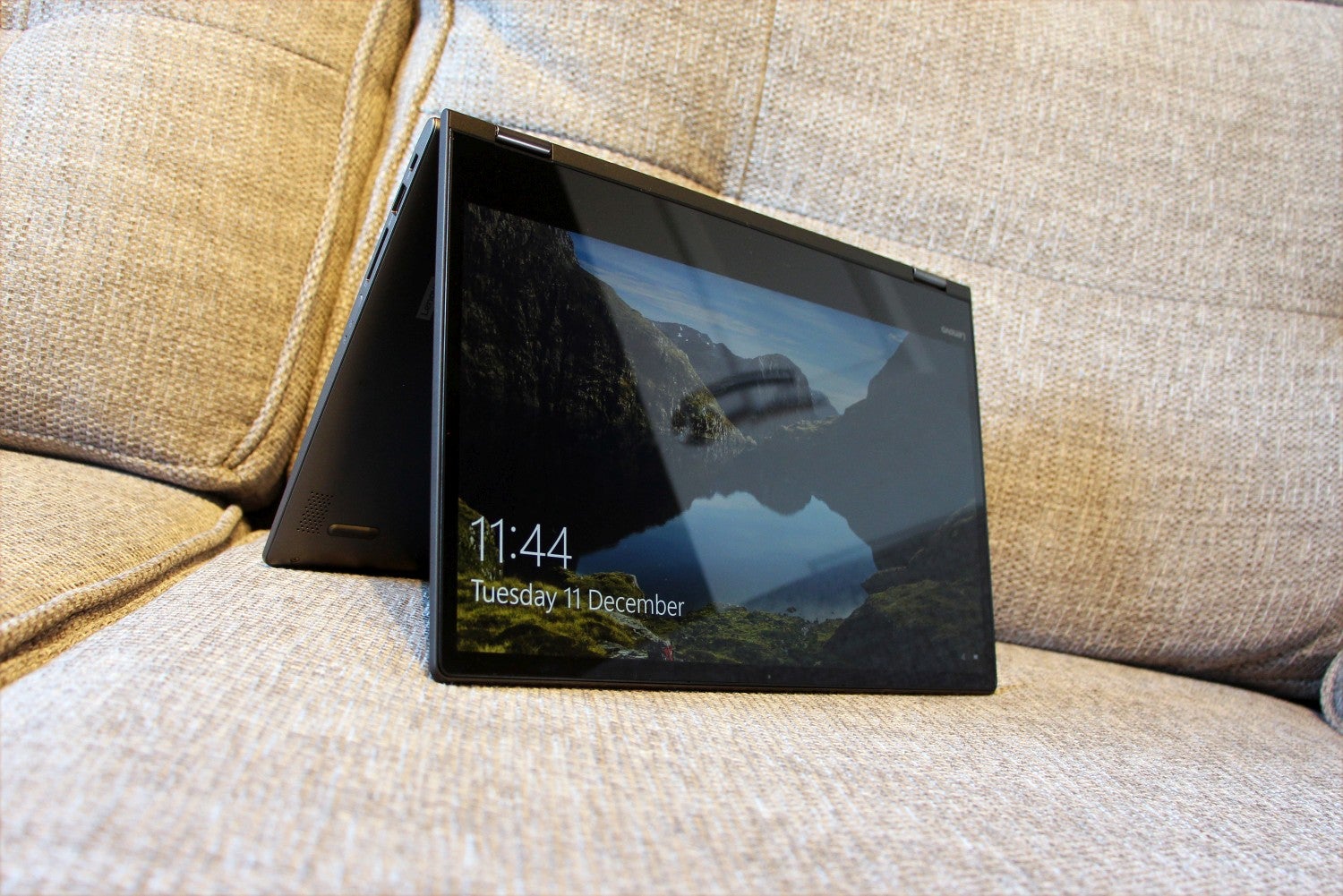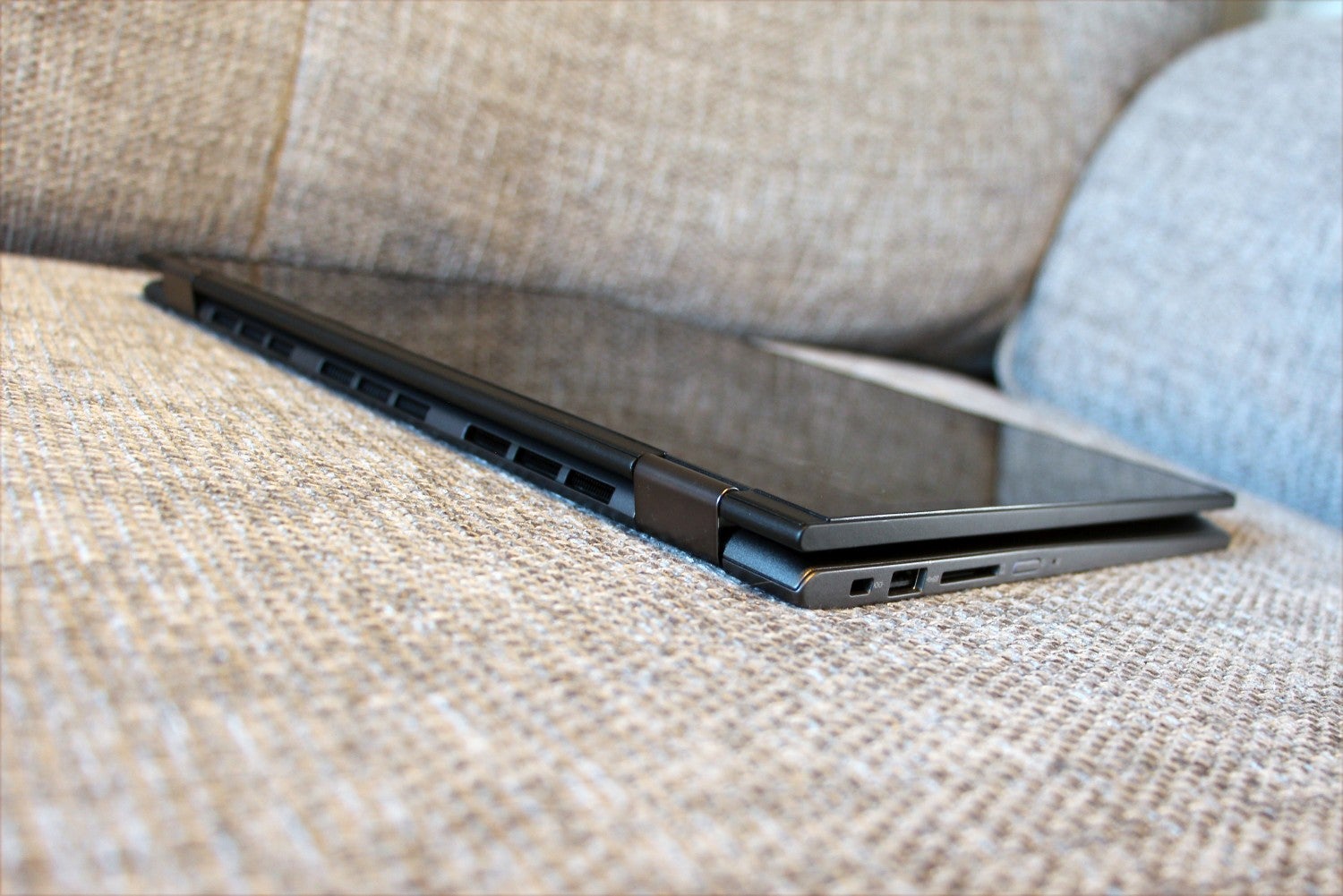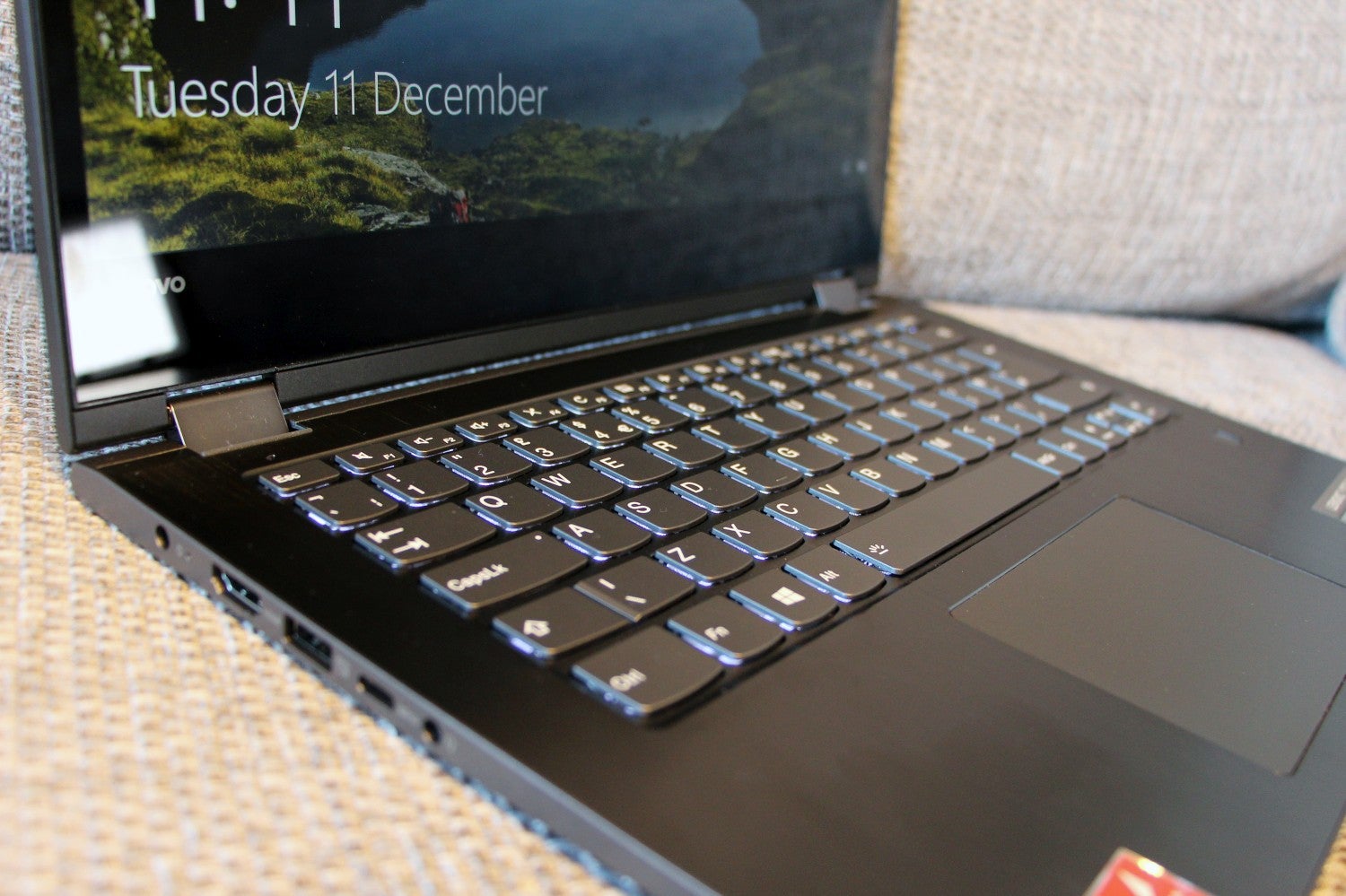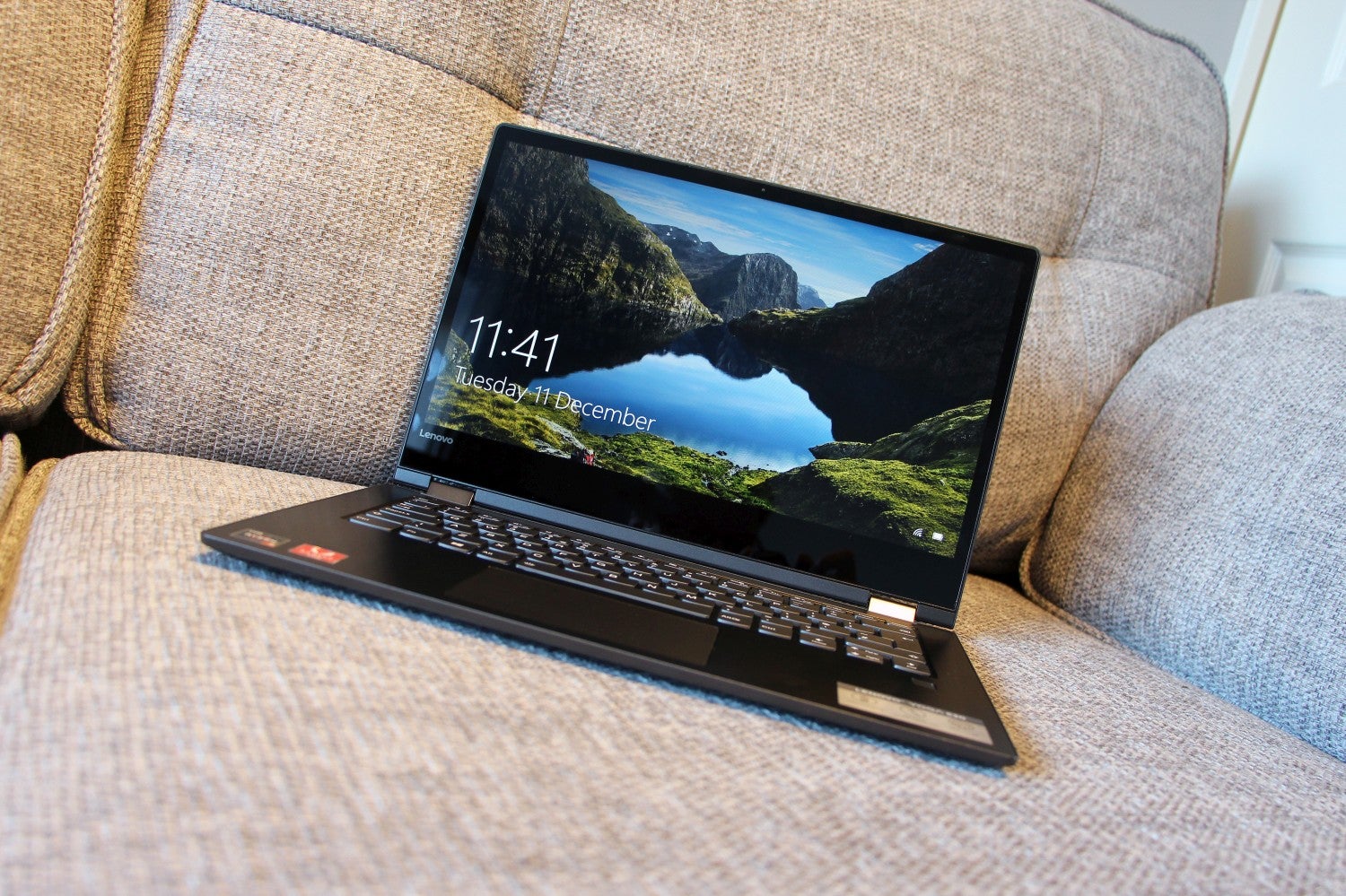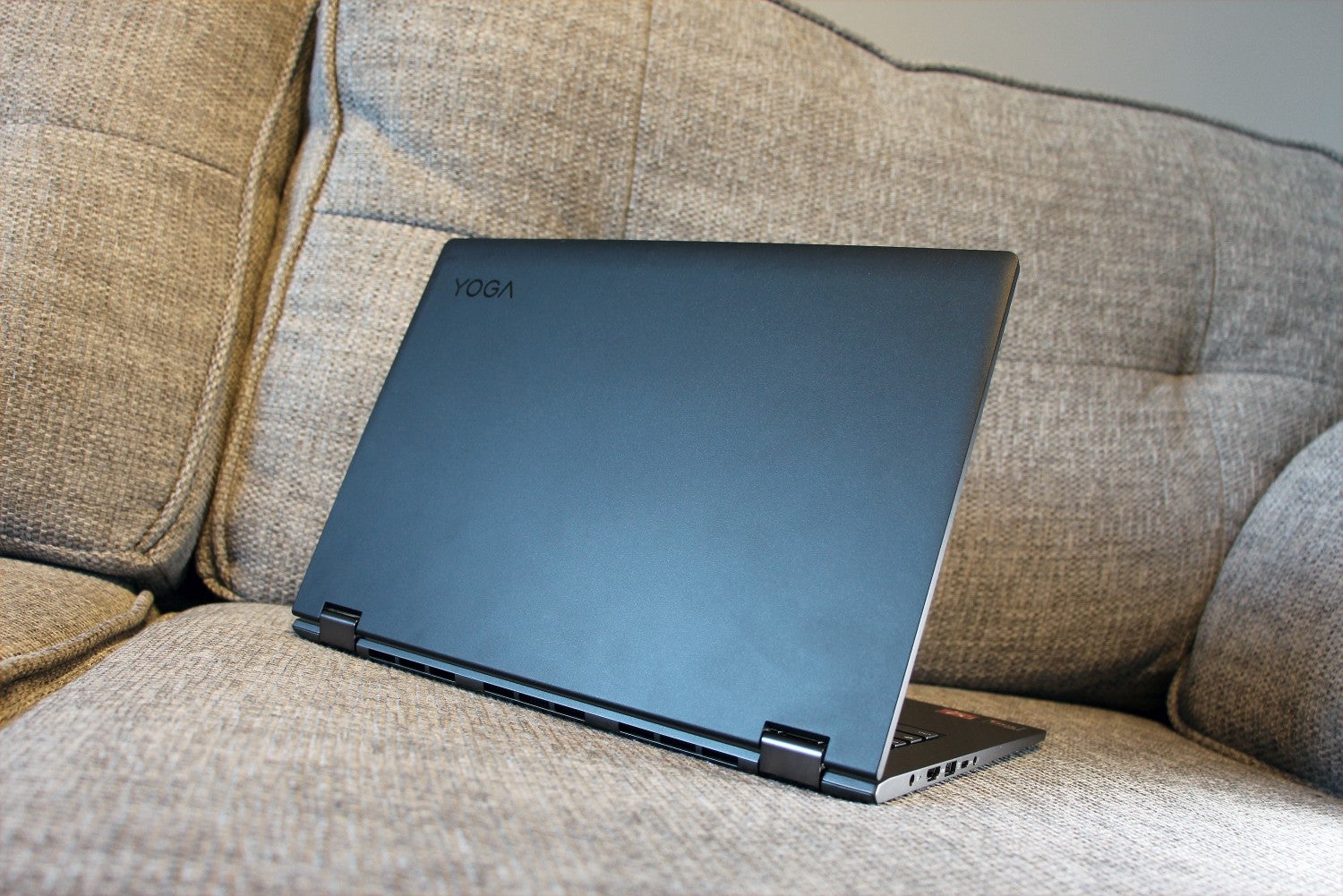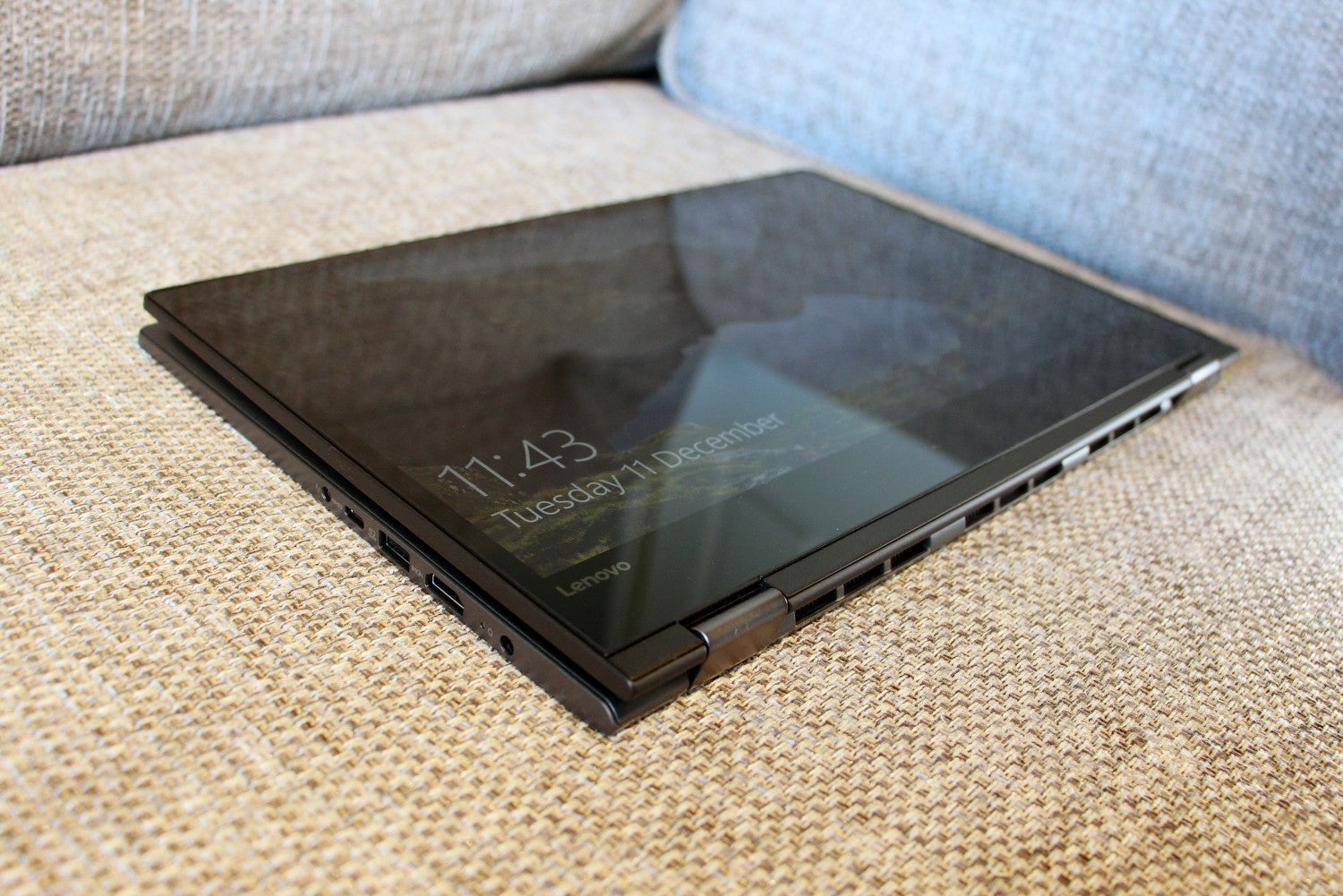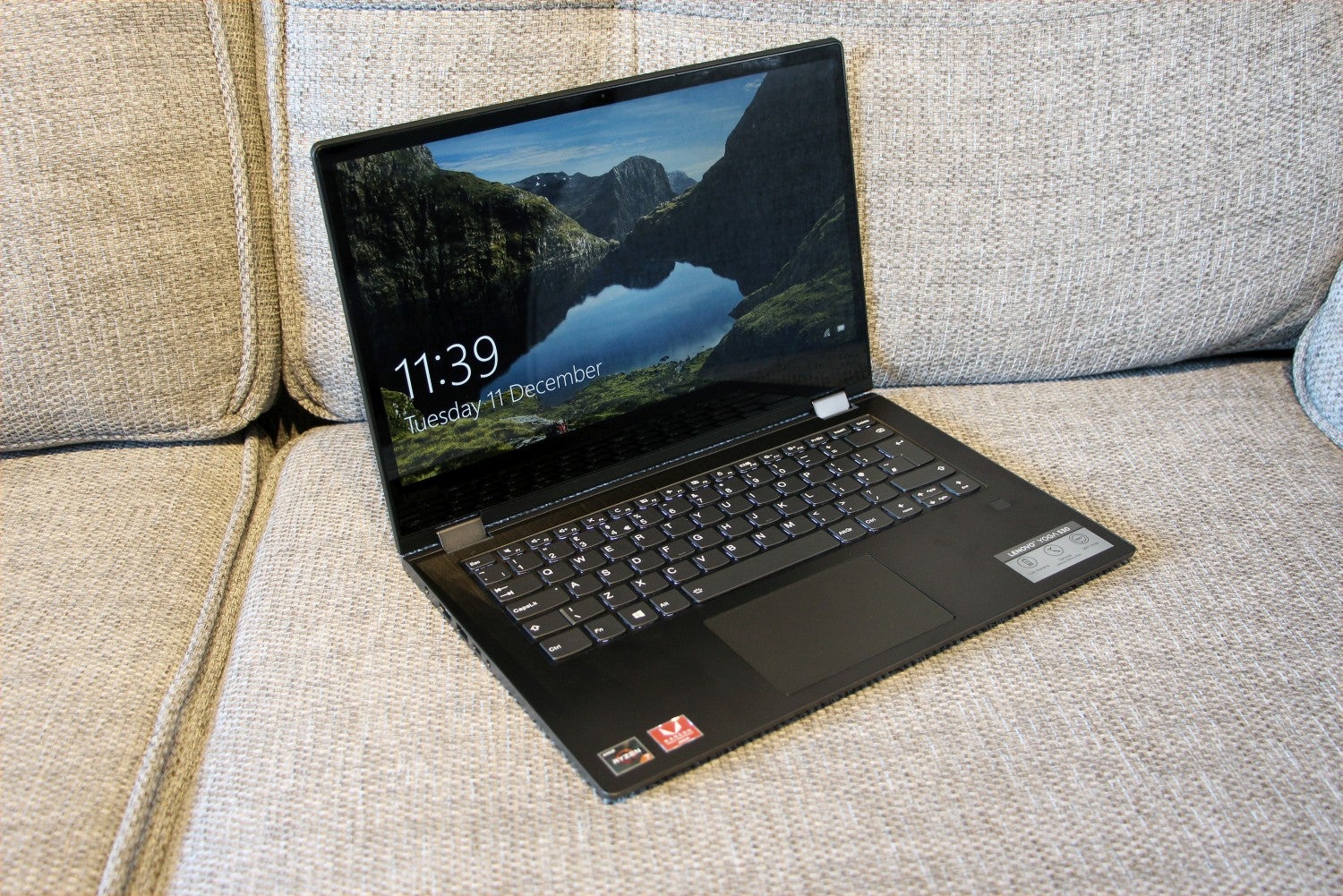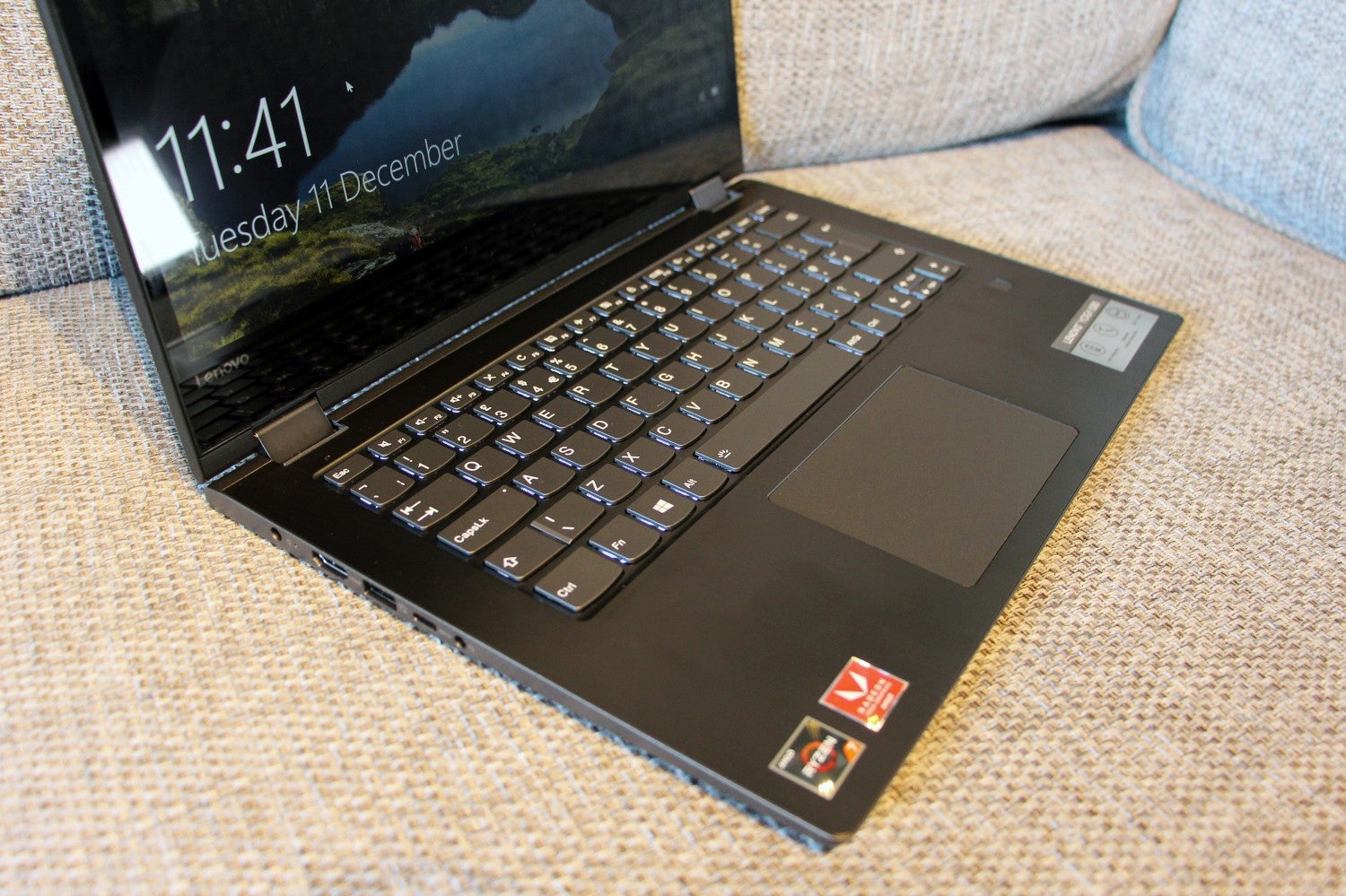Lenovo Yoga 530 Review
Lenovo Yoga 530 Review
It's slick, affordable, and packed with AMD hardware. Can the Lenovo Yoga 530 succeed?
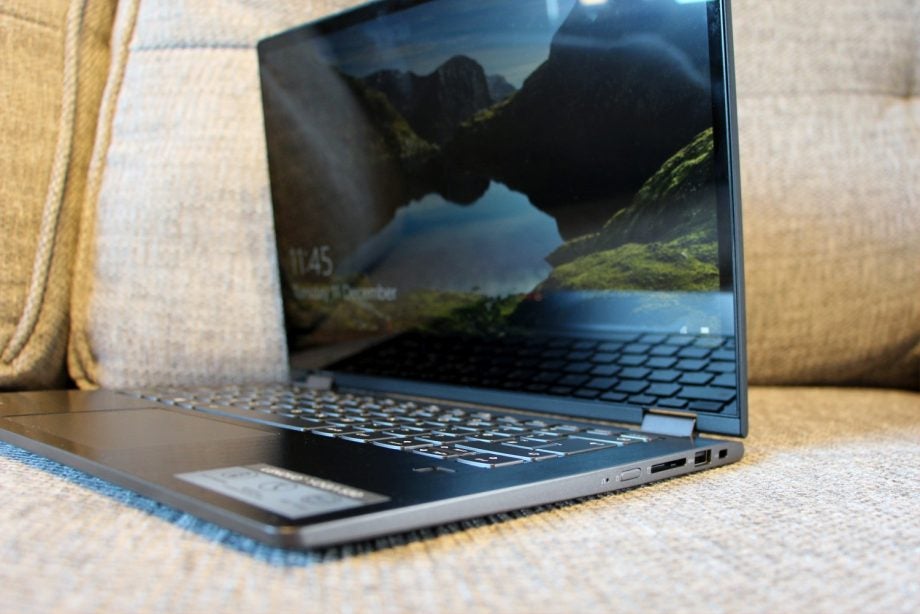
Verdict
The Lenovo Yoga 530 is a solid machine, but with inevitable compromises and no stand-out features
Pros
- Balanced performance from AMD processor
- Better GPU than Intel integrated graphics
- Decent, smart exterior
Cons
- Slower than Intel in applications
- Poor screen quality
- Average battery life
Key Specifications
- Review Price: £699
- 2.2GHz AMD Ryzen 7 2700U processor
- AMD Vega 10 graphics
- 14in 1920 x 1080 IPS touchscreen
- 8GB DDR4 memory
- 256GB Hynix SSD
- Windows 10 64-bit
- 1yr RTB warranty
What is the Lenovo Yoga 530?
The Lenovo Yoga 530 (530-14ARR) is a convertible that comes with an affordable price and plenty of AMD hardware – and that makes it unusual in the Intel-dominated world of slim, light all-rounders.
Can this £699 laptop take the fight to convertible rivals and the conventional laptop competition, or will AMD’s hardware balk in the face of Intel silicon?
Related: Amazon Prime Day 2019
Lenovo Yoga 530 – Design and build
The Yoga 530 is a mid-range machine – and it looks like it. The area around the keyboard is finished in a dark aluminium, but the rest of the Yoga is made up of plastic to keep the costs down. There’s a dark logo on the lid, but that’s it for extras. It must also be said that the screen’s bezels aren’t particularly slim.
The Yoga 530 won’t turn heads, but it looks fine; it’s smart and subtle.
The understated looks are matched with conventional convertible design. That means you get plenty of versatility: it’s easy to swing the Yoga into a full tablet position, or to prop it up to watch movies, browse recipes or read the news. The hinge is sturdy, strong and easy to move.
Get beyond the hinge, though, and build quality is only mediocre. There’s a little give in the thin metal around the keyboard, and the screen is a tad wobbly. Pressing on the rear of the panel causes the desktop to distort a little.
The minor build quality issues won’t cause big problems in day-to-day life. In addition, this is just the level of build quality that I’d expect of a machine at this price. If you’re particularly cautious then you could chuck the Yoga in a sleeve when travelling.
Note that the Yoga is no weaker than a device such as the Microsoft Surface Pro 6 – which is more expensive, but isn’t noticeably sturdier; its keyboard case is relatively flimsy.
The middling build quality and unremarkable aesthetic aren’t exclusive to mid-range convertibles. Look at the wider world of laptops and you’ll find the same issues. A £650 laptop such as the Acer Aspire 5 mixes metal with plastic in a design that doesn’t attract attention. Even the £700 Dell G3 15, touted as an affordable gaming notebook, looks underwhelming compared to its gaming rivals.
The Yoga’s connectivity is reasonable, but there are no surprises here either. There are sole USB 3.0 ports on both sides of the machine, and the left-hand edge has a Type-C connector. There’s a card reader on one side, and an HDMI output on the other.
On the inside is dual-band wireless and Bluetooth, but no Gigabit Ethernet and no adapter in the box.
The Lenovo weighs 1.6kg and is nearly 18mm thick. Those figures are fine for an affordable machine – and better than the Acer and Dell, which both weighed more than 2kg. However, there is space and weight to be saved elsewhere: the Surface Pro 6 with its Type Cover is slimmer and lighter than the Yoga.
The Lenovo isn’t particularly slim, light or good-looking, then – but it isn’t bad either: it has the strength to survive day-to-day life, it looks subtle, and it won’t weigh you down. The only way to get something noticeably smaller, lighter or better-looking is to spend a lot more.
Related: Best Android Tablet 2018
Lenovo Yoga 530 – Keyboard and trackpad
The Yoga has a conventional chiclet keyboard, rather than any of the industry-leading hardware often found on Lenovo’s more pricier machines.
It’s okay. The keys are large enough to avoid mistakes, and they have a slight concave design to improve comfort and accuracy. The buttons offer a normal amount of travel, and their action is softer than the mechanism found on most other laptops. The base has a little bit of give, too.
The typing action is quiet and comfortable, but it lacks the crisp firmness of many other devices – including the Dell. Whether that’s going to be a problem is largely down to personal preference, but rest assured that the Yoga’s keyboard is consistent, well built and will withstand long typing sessions.
Since the Yoga 530 is really a small lifestyle machine, you don’t get a numberpad – so some work tasks will be cumbersome. Elsewhere, the layout is fine, and you get a white backlight with two levels of brightness.
The trackpad is large and accurate, and the two built-in buttons are crisp and fast to respond. There’s a discreet fingerprint reader to the right of the trackpad, too.
Related: Best streaming sites 2018
Lenovo Yoga 530 – Screen and sound quality
This is one area where the budget has clearly bitten. The Yoga has a 1080p IPS touchscreen, which is fine on paper – but quality is lacking.
The brightness level of 218 nits is low. It’s good enough for most indoor scenarios, but try to use the Yoga outdoors or under particularly bright lights and the screen will struggle. At best it will be washed-out; at worst it will be downright difficult to see.
The black level of 0.17 nits is better, and the contrast of 1282:1 is fine. At least the latter figure ensures the Lenovo has reasonable depth – even if the lack of brightness leaves the screen looking dull.
The colour temperature of 6738K is fine, but the average Delta E of 5.03 is poor. And, more importantly, the Lenovo’s screen only displays 58% of the sRGB colour gamut. That means the panel will struggle to render many shades used in games, movies and photos.
These poor benchmark results contribute to a screen that looks pallid. Colours that are rendered properly don’t have any real punch, and the lack of brightness hinders the entire panel. It will also make the Yoga trickier to use in situations where there’s a lot of light.
The Yoga’s screen is dull and disappointing, which means that games and films will look underwhelming. Media can still be enjoyed on this screen, of course – alongside web browsing and office tools – but the Yoga’s panel isn’t reliable for colour-sensitive work. I’d also advise those particularly interested in screen quality to look elsewhere.
The Acer and Dell machines perform even worse in some tests – they both suffer poorer brightness and contrast levels. If screen quality is important to you, the Microsoft Machine is far better.
The speakers aren’t particularly good, either – which isn’t a surprise in an affordable notebook. They’re not loud, and some tones become fuzzy and a little distorted when the audio is particularly busy. The speakers suffice for Skype calls and basic media duties, but nothing more.
Related: Best laptops for students 2018
Lenovo Yoga 530 – Performance
This particular model of the Yoga is loaded with AMD hardware. Processing power comes from the Ryzen 7 2700U.
It’s one of the more powerful chips from AMD’s latest mobile range, and it has a solid specification alongside AMD’s latest architecture. Its four cores are multi-threaded, and its base clock of 2.2GHz uses Boost to reach a peak of 3.8GHz.
It’s a good specification, but it might still struggle to compete with Intel. The Core i5-8250U included in the Acer and the Microsoft Surface Pro has four Hyper-Threaded cores – and while its clock speeds are lower, Intel’s Coffee Lake architecture is generally better than AMD’s equivalents.
The Dell G3 15 steps up a notch with the Core i7-8750H in some models that cost £829 or more. This popular chip also uses Coffee Lake, and it has six Hyper-Threaded cores with a peak Turbo speed of 4.1GHz.
The Ryzen 7 2700U is a decent performer. In the Geekbench single- and multi-core tests it returned results of 3360 and 7504 – enough pace to handle web browsing, Office applications and day-to-day media and multi-tasking. However, the Intel Core i5 chip was better – the Acer machine scored 4119 and 13,103 in those tests, with the Surface Pro returning similar scores.
The Lenovo never felt sluggish in daily use, but its performance could be better. While 8GB of dual-channel memory is welcome, the 256GB SSD delivered a mediocre read pace of 1644MB/sec and a poor write speed of 590MB/sec. You don’t get a secondary hard disk in this machine, either.
The Ryzen chip doesn’t just provide the Yoga’s processing power; it provides the graphics, too. The Vega 10 core is an integrated chip with no dedicated memory, so don’t expect benchmark-breaking speed. Nevertheless, it still has AMD’s dedicated graphics architecture alongside 640 stream processors.
The £650 Acer Aspire 5 and £849 Surface Pro 6 have Intel integrated graphics – the Vega 10 will beat those. However, switch over to the gaming Acer Nitro 5 or the Dell G3 15 and you’ll get a beefier GTX 1050 without spending much more.
The AMD-powered Lenovo scored 1856 in the 3DMark: Fire Strike benchmark – nearly twice as quick as the Intel cores in the Acer and Microsoft machines. However, it’s about 1000 points behind laptops with the lowly Nvidia GeForce MX150 core, and more than 3000 points behind the GTX 1050.
Real-world tests further prove the Vega core’s limitations. It handled Dirt Rally with a just-playable minimum of 29fps at Low settings, but it couldn’t play Middle-earth: Shadow of Mordor. If you want to play today’s triple-A titles on the Lenovo Yoga 530 then you’re going to have to make severe compromises to graphical settings and the resolution.
If you’re an eSports player, there’s more scope. Games such as League of Legends, CS:GO, Hearthstone and DOTA 2 will all run well on this machine.
The Powermark battery benchmark simulates browsing and streaming video with the screen at 150 nits brightness. In that test, the Lenovo lasted for 7hrs 26mins.
That’s a middling result for a laptop of this type. The Microsoft Surface Pro lasted for an additional 30 minutes, and the Acer Aspire 5 managed almost nine hours. Even the Dell G3 15, with its discrete GPU, lasted for nearly eight hours.
The Yoga isn’t awful in this regard, but other machines do offer more longevity – you won’t get a full day’s use from the Lenovo machine before you need to plug it in.
If you don’t have £699 to spend then there are a couple of other Lenovo Yoga 530 models available. The cheapest version costs £399, but has an AMD Ryzen 3 2200U processor with weaker graphics and a smaller SSD. A £549 option includes a Ryzen 5 2500U chip with mid-range Vega graphics. Equivalents with Intel CPUs are also available at similar prices, and you can pay £729 for a version with a faster Core i5-8250U processor.
Related: Best Ultrabook 2018
Why buy the Lenovo Yoga 530?
The Lenovo Yoga 530 is a good mid-range convertible, but inevitable compromises mean that some consideration should be made before making a purchase.
On the inside, the AMD Vega graphics core is good for eSports and better than Intel’s equivalent, but it’s slower than a proper laptop’s discrete GPU at the same price. The processing portion of the chip is fine for day-to-day use, but it can’t compete with Intel’s offerings.
The screen isn’t brilliant, but it’s fine for mainstream use. Similarly, the keyboard is comfortable but lacks conviction, and battery life is acceptable – but better longevity can be found elsewhere.
On the outside the body offers acceptable build quality, a sturdy hinge design and underwhelming looks. It’s slimmer and lighter than conventional notebooks, but other convertibles are smaller still.
Despite the faults and compromises, then, the Yoga 530 is a reasonable option. It has enough power for work and play – as long as you temper your expectations – in a case that functions well as a laptop and a tablet. You could do a lot worse if you’re looking for a mid-range convertible.
Verdict
Reasonably well-balanced performance from the AMD-powered internals, and an exterior that offers solid versatility and acceptable design, undercutting normal laptops for size and weight. The screen and battery life are only middling, but that’s to be expected from a machine at this size. It’s a good – if limited – all-round convertible option.
How we test laptops
Unlike other sites, we test every laptop we review thoroughly over an extended period of time. We use industry standard tests to compare features properly. We’ll always tell you what we find. We never, ever, accept money to review a product.


